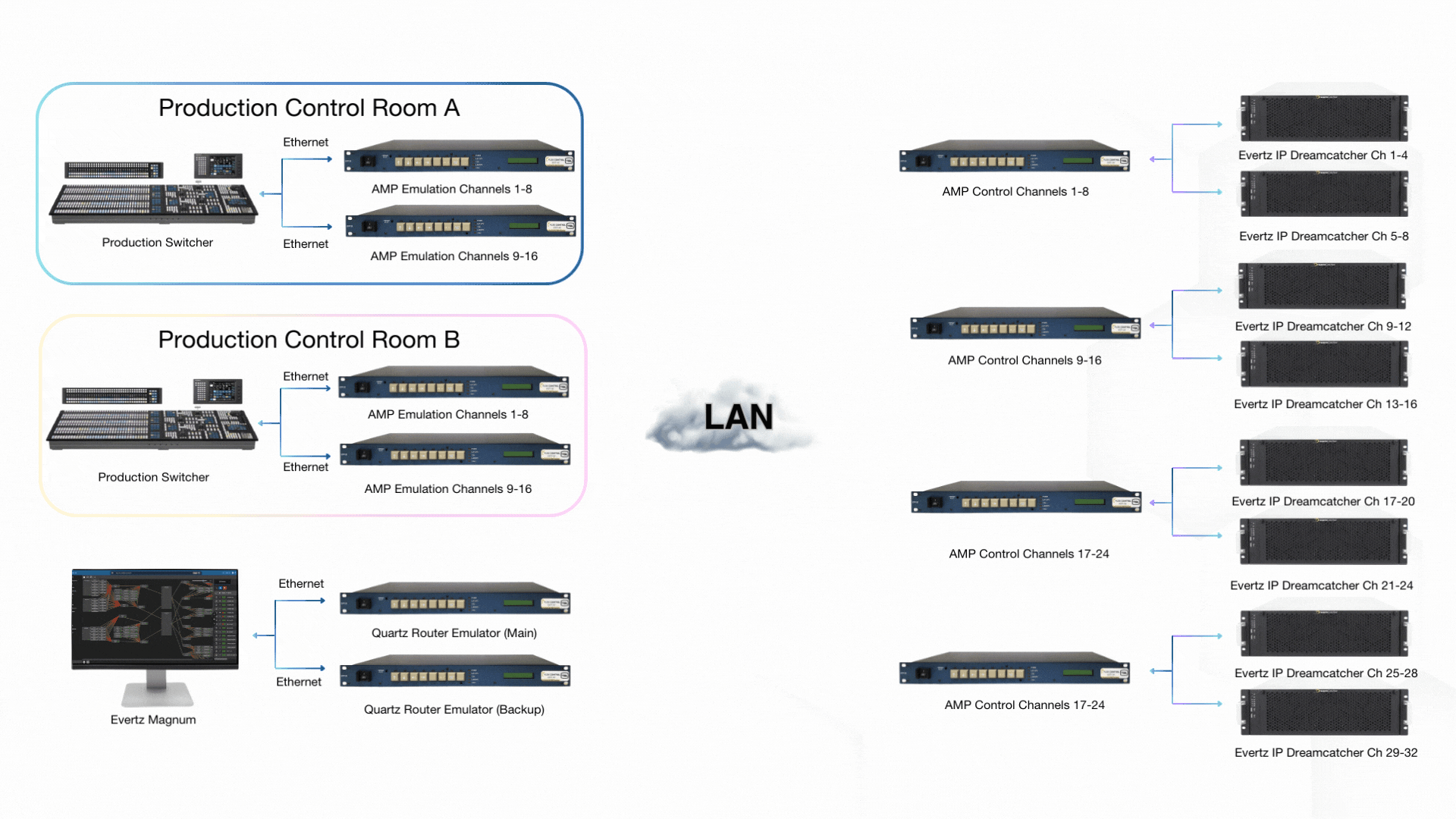.gif)
Facility control
The modern operator can be faced with a bewildering array of control surfaces, web pages and graphical user interfaces to control even a simple production. This can lead to delays and errors, affecting production values and output, and perhaps even causing a financial penalty (service credits) from the broadcasters' customers.
TSL Control with its vast array of device interfaces can allow for the flexible and user-configurable control of multiple devices from a single control panel or GUI. Present just the controls required to enable the operational workflows for multiple devices, from multiple vendors.
Easier and simplified operation leading to better quality output and fewer errors. This can reduce production time and lead to savings.
Use Case: A Leading American Commercial Broadcast Network
A Leading National American Broadcast Network uses TSL Control to route video server control between their Sony XVS mixers and Evertz Dreamcatcher video servers.
At the software level, the system is comprised of several input and emulator protocols and a separate number of output and controller protocols.
Each production control room (PCR) has a dedicated TSL general purpose interface tally processor (GTP).
The mixer is trying to control 4 channels of the video server, so it sends 4 separate instances of AMP protocol to that dedicated TSL GTP.
The GTP is emulating an AMP-based video server so that it can receive AMP protocol and respond to it as the mixer would expect.
On the back end, a group of TSL GTPs connect to the available video servers, again using AMP protocol.
Additionally, there are two separate GTPs that are known as the Router GTPs. These two act as a primary/backup redundant pair running in active/active mode.
The two router GTPs create a virtual routable matrix that any router control system can control, using standard protocols like Quartz or Snell SW-P08.

Within this virtual matrix, each incoming connection from a mixer is assigned an input number and each connection to a video server is assigned an output number.
The router GTPs receive cross-point commands from the router control system and then respond to them by telling the GTPs in the PCRs to connect to the appropriate GTPs that connect to the video server.
This particular system utilises hardware GTP’s but there is no reason why these could not be virtualised.
Facility control diagram


